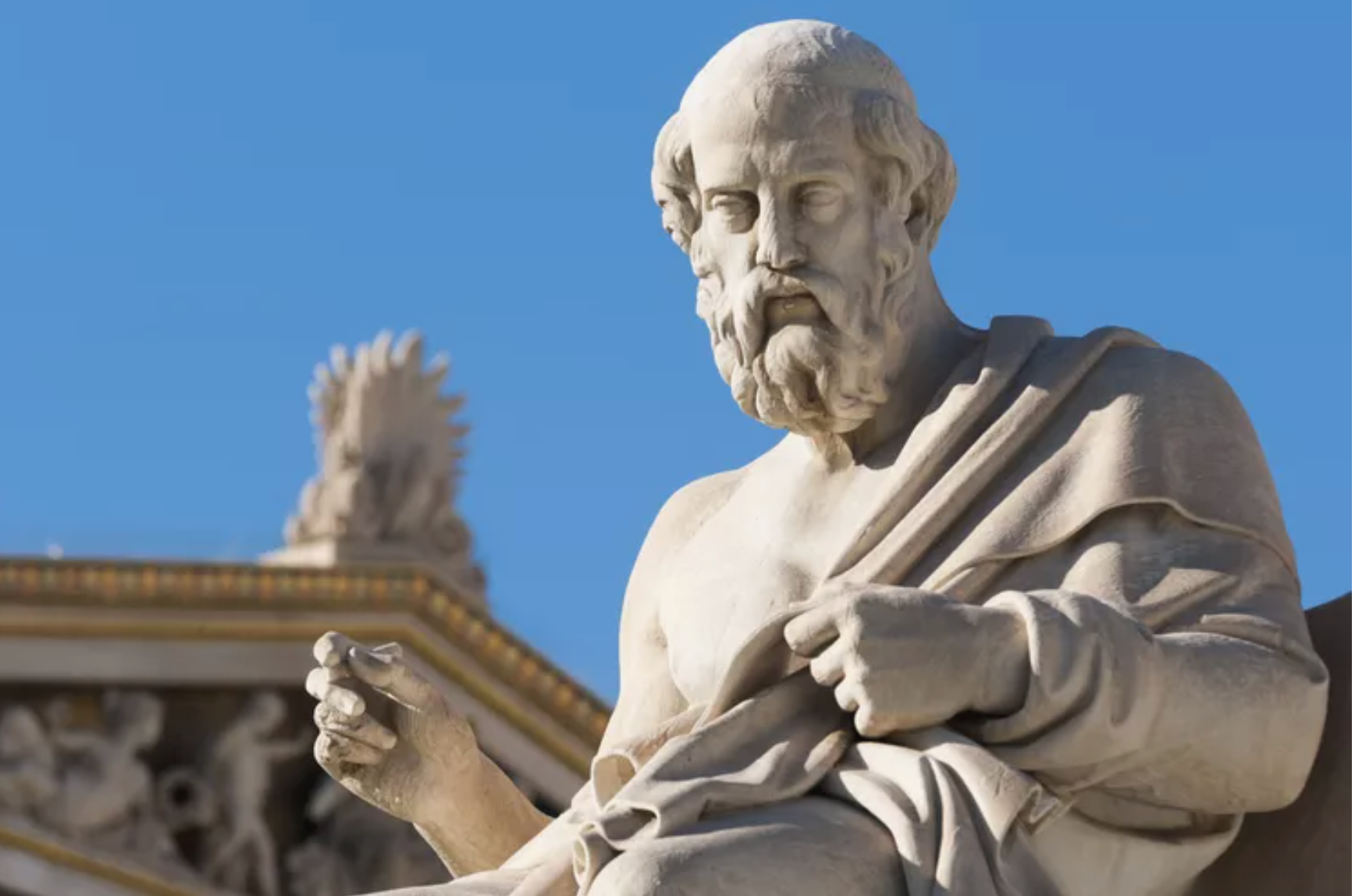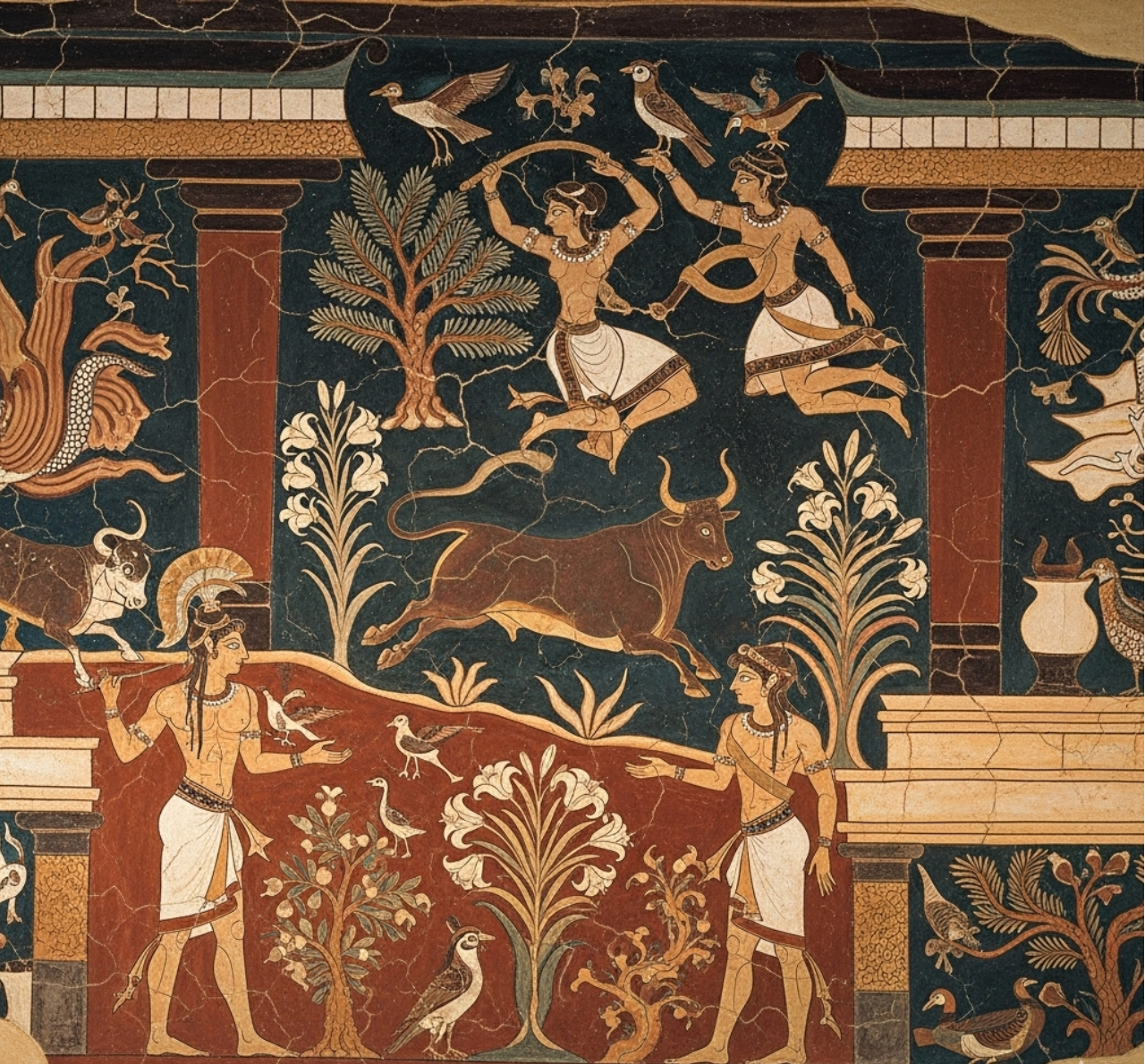The ancient Greek philosopher Plato, who first described the legendary civilization of Atlantis and the island nation of Keftiu.

A depiction of the legendary Keftiu capital described by Plato, a mountain city rising from the sea—rich in trade, faith, and ancient brilliance.

Plato described the capital city of Keftiu rose from the sea—a mountainous island with fertile plains rich in grain and oak. At its centre stood a hill encircled by alternating rings of land and sea, forming a natural harbour of perfect defence.
For over 7,000 years, the Keftiu people thrived in peace, forging vast trade alliances and spreading their faith in the one God—the Mother Goddess—across nations and oceans. Over ninety languages were spoken in this twin island nation, as visitors from every corner of the world came to learn, trade, and share knowledge. It was, in every sense, the heart and centre of the ancient world.
Crete and Keftiu, the twin islands, produced oak and cedar, metals, and abundant food. Their lands teemed with deer, lions, griffins, and miniature elephants. The people mastered irrigation, built harbours, temples, bridges, and canals connecting the island’s rings of sea. Two great obelisks guarded the main harbour—each with stairways and mirrors that reflected firelight by night and focused sunlight by day, serving as both beacon and weapon. (This design later inspired Archimedes’ mirror machines at Syracuse in 212 BC.)
The city’s marvels included bronze gates, fountains, plumbing that delivered hot and cold water to multistorey homes, private bathrooms with flush systems, and an underground sewage network. Keftiu’s merchant fleet—over 100,000 ships—carried goods, calendars, astronomy, geometry, and the Mother Goddess faith to every known continent.
Their festivals featured bull-leaping ceremonies symbolising strength and devotion. At the city’s heart stood the grand Temple of the Mother Goddess, its walls of gold and silver gleaming, crowned with ivory roofs and golden statues beside the royal palace that overlooked the shining harbour.
The Bronze Age Secrets Behind Plato’s Atlantis
For over two millennia, the legend of Atlantis has rippled through history — a tale of a mighty island empire swallowed by the sea. First mentioned by Plato around 360 BC, the story has intrigued scholars, dreamers, and storytellers alike. But what if the myth of Atlantis was not just a philosopher’s fable, but an echo of something real — a civilisation lost to time, buried beneath the waves, and reborn through the power of fiction?
Today, a new generation of writers are reimagining this ancient mystery through the lens of Ancient Greece fiction and fact-based ancient storytelling, blending archaeology and imagination to resurrect a forgotten world.
The Origins of the Atlantis Myth
Plato’s account describes Atlantis as an advanced maritime power that existed 9,000 years before his time. The Atlanteans possessed vast wealth, stunning architecture, and unmatched military might — until their moral decay led to divine punishment and destruction.
For centuries, scholars debated whether Plato invented Atlantis as a moral allegory or drew from an older memory of a real civilisation, perhaps one that flourished during the Bronze Age. The Minoans of Crete and Thera (modern-day Santorini) are often cited as the strongest candidates. Their palaces, artwork, and sea-based trade network mirror the grandeur described in Plato’s dialogues.
When the volcanic eruption of Thera devastated the region around 1600 BC, it may have birthed the enduring Atlantis myth — a story passed down through generations until Plato preserved it in ink.
Fiction Meets Archaeology
Modern readers have developed a taste for fact-based ancient fiction, novels that breathe life into real archaeological discoveries while weaving human drama through them. In this genre, authors act as literary archaeologists, transforming ruins and relics into narrative gold.
Books that fall into the category of archaeological evidence novels and ancient history mysteries often use the latest research to reimagine what life might have been like in lost civilisations. Excavations in Akrotiri, Knossos, and across the Aegean have revealed frescoes depicting bull-leaping, intricate plumbing systems, and goddess worship — fragments of a world advanced beyond its time.
The Beauty and Fragility of Civilisation
These findings fuel a new generation of Bronze Age historical fiction, where myth merges with evidence and imagination bridges the gap between what we know and what we feel might have been true. The beauty of these stories lies not just in what they tell us about the past, but in how they remind us of the fragility of civilisation itself.
From Plato’s myth of Atlantis to Joseph Peterson’s Beauty and Bronze, the echoes of ancient worlds continue to call us — not just to remember them, but to learn from them. Because every empire, no matter how divine, carries within it both the spark of creation and the shadow of its own undoing.



